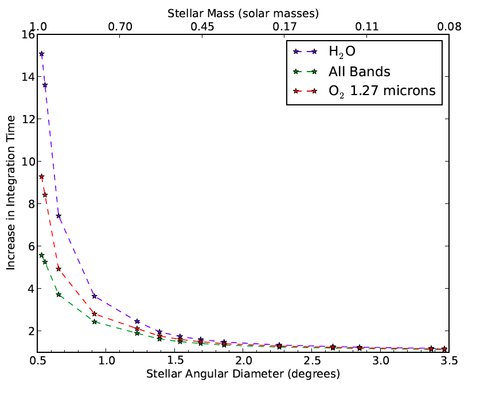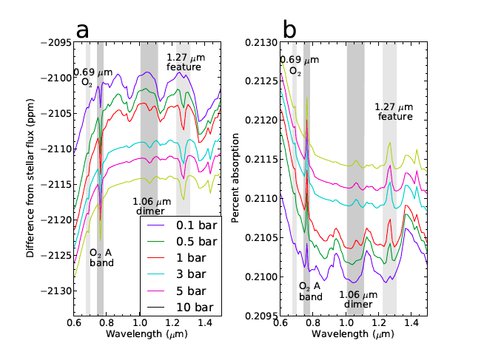2013 Annual Science Report
 VPL at University of Washington
Reporting | SEP 2012 – AUG 2013
VPL at University of Washington
Reporting | SEP 2012 – AUG 2013
Exoplanet Detection and Characterization: Techniques, Retrieval and Analysis
Project Summary
In this task VPL team members use theoretical modeling and analysis to develop new techniques for detecting and characterizing extrasolar planets. These include developing new techniques for detecting exoplanets in transit data, especially those planets with unusual orbital properties. Team members also work to provide the underlying theory required to develop new remote-sensing techniques for probing planetary atmospheres. They also work on techniques and tests for the retrieval of information about planetary environments from exoplanet photometry and spectra.
Project Progress
In this task, VPL team members develop new techniques for detecting exoplanets in astronomical data, as well as new remote-sensing techniques for retrieving information about planetary environments from exoplanet photometry and spectra.
We have improved algorithms and software for the detection of exoplanets. Agol and colleagues published a new technique for detecting quasi-periodic transiting planets (Carter and Agol, 2013). This new technique will increase our ability to find planets whose orbits are very strongly perturbed by their planetary companions, that would normally be missed by classical search algorithms. Agol and colleagues also developed a software tool to allow rapid analysis of exoplanet transit data (Eastman et al., 2013).
In the area of predictions, retrieval and analysis for exoplanet characterization Agol and Dobbs-Dixon used 3-D hydrodynamical simulations of highly irradiated Jovian planets to predict primary and secondary eclipse timing offsets as a function of wavelength (Dobbs-Dixon and Agol). These predictions may help improve observations of these targets as observed by the James Webb Space Telescope. Line, Crisp, Yung, and colleagues developed, tested, and published the relative performance of three commonly used remote sensing retrieval algorithms (optimal estimation, Markov-Chain Monte Carlo, and Bootstrap Monte Carlo) for interpreting realistic, synthetic spectra of exoplanets (Line et al., 2013). Ongoing work includes the retrieval of chemical disequilibrium states from exoplanet spectra.
VPL team members also developed a new technique for probing the atmospheric pressure of a terrestrial exoplanet, a planetary characteristic that is very challenging to measure. Misra, Meadows, Claire and Crisp used SMART to assess the use of dimers, temporary associations of two atmospheric molecules, to retrieve surface pressures on exoplanets. Absorption from dimer molecules (e.g. O4) is more strongly dependent on pressure than that of monomer molecules (e.g. O2). We found that by comparing the absorption strengths of O2 monomer and dimer features it may be possible to estimate the surface or cloud-top pressure on some exoplanets (Misra et al., in press). In ongoing work, Misra, Crisp and Meadows, completed modification of the VPL’s line-by-line radiative transfer model (SMART)to generate transit transmission spectra (Misra et al., in prep). The model includes gas absorption, cloud and aerosol extinction, refraction, and the effects of stellar limb darkening. We find that the inclusion of refraction decreases the predicted detectability of spectral absorption features in transit transmission (Misra et al., in prep).
Publications
-
Carter, J. A., & Agol, E. (2013). THE QUASIPERIODIC AUTOMATED TRANSIT SEARCH ALGORITHM. The Astrophysical Journal, 765(2), 132. doi:10.1088/0004-637x/765/2/132
-
Dobbs-Dixon, I., & Agol, E. (2013). Three-dimensional radiative-hydrodynamical simulations of the highly irradiated short-period exoplanet HD 189733b. Monthly Notices of the Royal Astronomical Society, 435(4), 3159–3168. doi:10.1093/mnras/stt1509
-
Eastman, J., Gaudi, B. S., & Agol, E. (2013). EXOFAST: A Fast Exoplanetary Fitting Suite in IDL. Publications of the Astronomical Society of the Pacific, 125(923), 83–112. doi:10.1086/669497
-
Line, M. R., Wolf, A. S., Zhang, X., Knutson, H., Kammer, J. A., Ellison, E., … Yung, Y. L. (2013). A SYSTEMATIC RETRIEVAL ANALYSIS OF SECONDARY ECLIPSE SPECTRA. I. A COMPARISON OF ATMOSPHERIC RETRIEVAL TECHNIQUES. The Astrophysical Journal, 775(2), 137. doi:10.1088/0004-637x/775/2/137
-
Misra, A., Meadows, V., Claire, M., & Crisp, D. (2014). Using Dimers to Measure Biosignatures and Atmospheric Pressure for Terrestrial Exoplanets. Astrobiology, 14(2), 67–86. doi:10.1089/ast.2013.0990
-
PROJECT INVESTIGATORS:
-
PROJECT MEMBERS:
Eric Agol
Project Investigator
Victoria Meadows
Project Investigator
Mark Claire
Co-Investigator
David Crisp
Co-Investigator
Michael Line
Co-Investigator
Amit Misra
Co-Investigator
Yuk Yung
Co-Investigator
-
RELATED OBJECTIVES:
Objective 1.2
Indirect and direct astronomical observations of extrasolar habitable planets.
Objective 7.2
Biosignatures to be sought in nearby planetary systems

